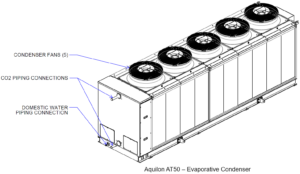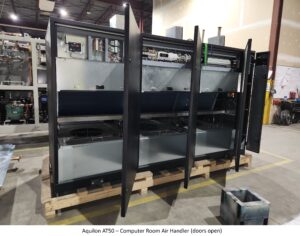Bell Canada Develops Innovative Green Cooling System for IT

Projects Sponsor
Bell Canada’s new computer room cooling system grants a 40% reduction in energy use while eliminating the risks of environmentally unfriendly halocarbons and circuit board unfriendly water pipes.
Cleantech promises to help create a sustainable future — but it’s currently built on an energy-intensive backbone of network and building equipment. Luckily, Bell Canada is already hard at work addressing this apparent contradiction.

Bell Canada has calculated that the GHG reductions enabled by customers using its products and services such as Internet of Things solutions, teleconferencing, and teleworking are 5.2 times greater than the operational GHGs emitted by Bell in providing those services. But, while modern communication technology allows us to reduce the GHG emissions produced by moving people and products from one place to another, there is a mostly unseen physical infrastructure supporting the services provided by this high-speed networking.
The data-intense products and services that run over modern networks depend on computer rooms with hundreds or thousands of IT devices treating the data and directing it to the intended recipient. The more data treated, and the more connections made, the more work these IT devices do. Consequently, the more electricity they consume, the more excess heat they produce.
Because all IT devices can only operate in an acceptable temperature range, while producing a lot of excess heat themselves, a great deal of energy is expended just to keep the networking devices from baking themselves in their server racks.

If that weren’t enough to make cooling a hot topic, conventional air conditioning systems rely on halocarbon-based refrigerants which, beyond having a strong greenhouse gas effect, are also largely responsible for the deterioration of the stratospheric ozone layer. Even under careful maintenance and device-management programs, these refrigerants leak from air conditioning systems, contributing to climate change and ozone depletion.
As is often the case, the first step to addressing this issue was re-examining old assumptions. Historically, Bell’s computer rooms have been air-conditioned to a temperature of 24°C or less. Driven by a commitment to reduce GHG emissions, the team at Bell challenged the status quo by re-assessing the need for maintaining such a low temperature.

Comparing the technical specifications of the equipment rooms, their research showed that most of the equipment can safely operate at higher room temperatures, in the 30°C – 35°C range. This seemingly small difference in operating conditions opens the door to massive energy savings opportunities through alternative cooling solutions.
Equipped with this knowledge, Bell partnered with Carnot Refrigeration, an air conditioning equipment manufacturer based in Trois-Rivières, Québec, to turn those possible solutions into reality by collaboratively developing a new cooling product based on two natural processes. The first is a thermosiphon system, in which CO2 naturally circulates between the air conditioner (cold side) and its rooftop condenser (hot side), removing the need for both energy intensive pumps and harmful halocarbon gasses. The second is an adiabatic process in which the rooftop condenser passes outside to pass through wet pads, relying on the fact that air naturally cools as humidity rises to cool it down before it passes through the heat exchanger.

The final result, the Aquilon AT50, is a simple but innovative system that does not use halocarbons, yet can achieve the air cooling required for Bell to operate its computer rooms—at an approximately 40% lower rate of energy consumption. An additional benefit is that, unlike conventional evaporation-tower-based systems, the new system does not require large amounts of water pumped into the computer room to carry away excess heat. The Aquilon AT50 removes that danger, along with the expense normally involved to pre-emptively mitigate the risk of having a more traditional system decide to cool your vital computer equipment by springing a leak directly overhead.
The Aquilon AT50 is capable of providing 50 Tons (60,000 Btu/hr) of free-cooling (that’s fans only, no compressors) year-round while maintaining acceptable room temperatures. On the hottest summer days — the ones that make you wish your Toronto data centre would spontaneously turn into a cold shower — the Aquilon AT50 will ensure the room temperature will rise to no more than 32°C. This is sufficiently below the maximum recommended temperature for modern computer room equipment, especially those Bell selects for operation in warmer environments.

With the average computer room consuming an estimated 630,000 kWh/year, Bell found that the energy savings for even just one 800 kW computer room would be 430,000 kWh/year. Factor in that Bell operates a great many more than one such room across the country, and that plans to convert more of them to the high-efficiency system are in the works, and it’s clear that scaling up this new way of cooling down is a worldwide win.













